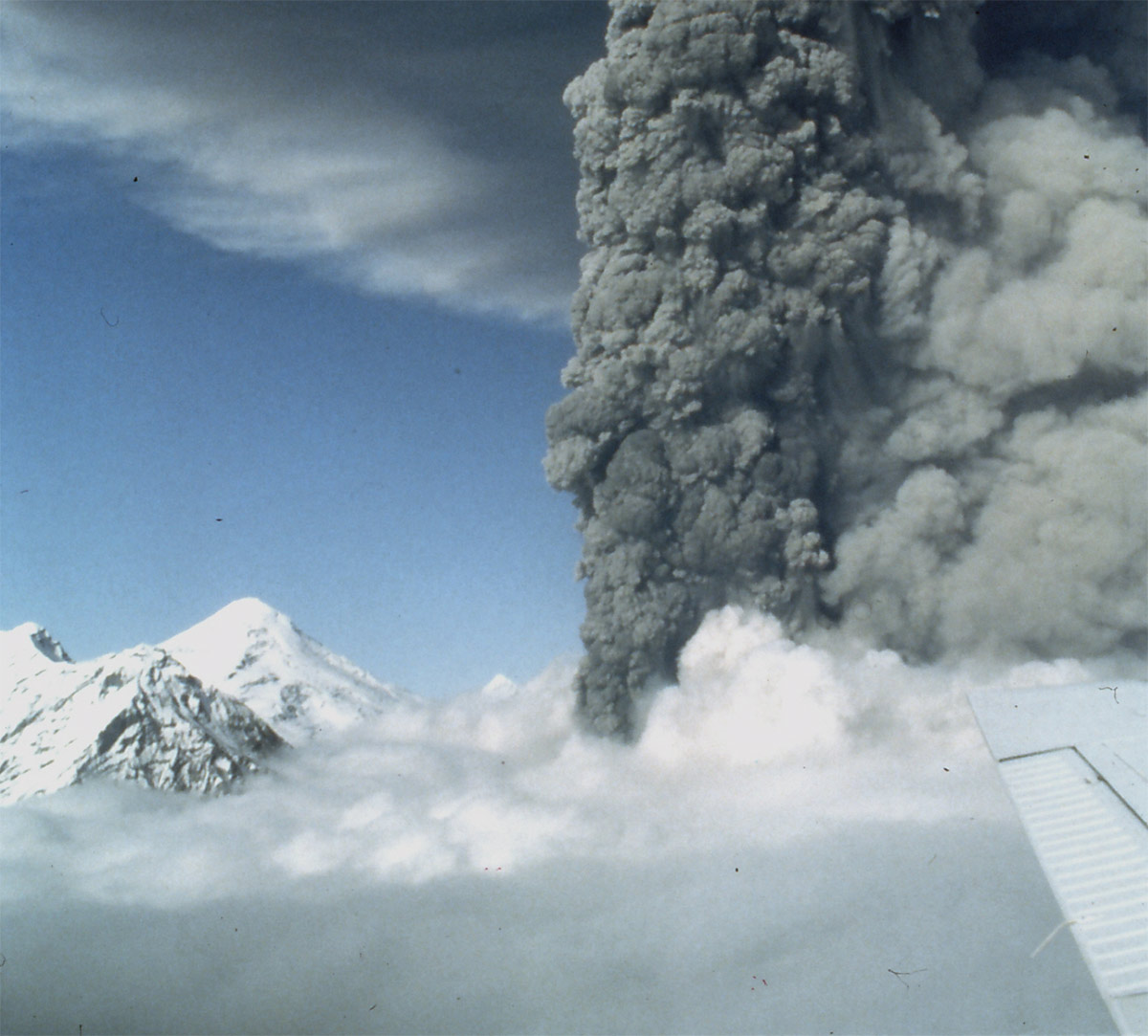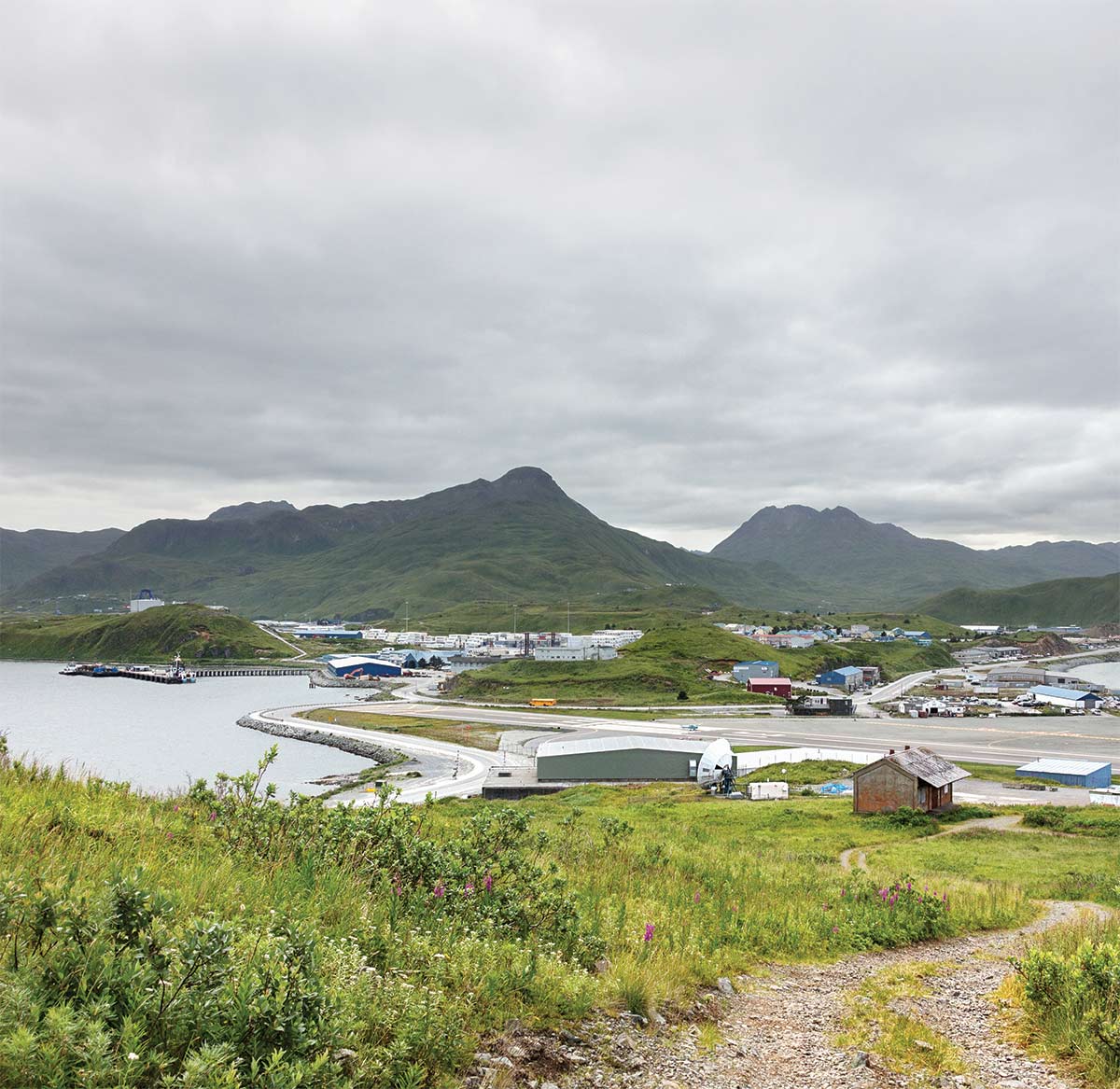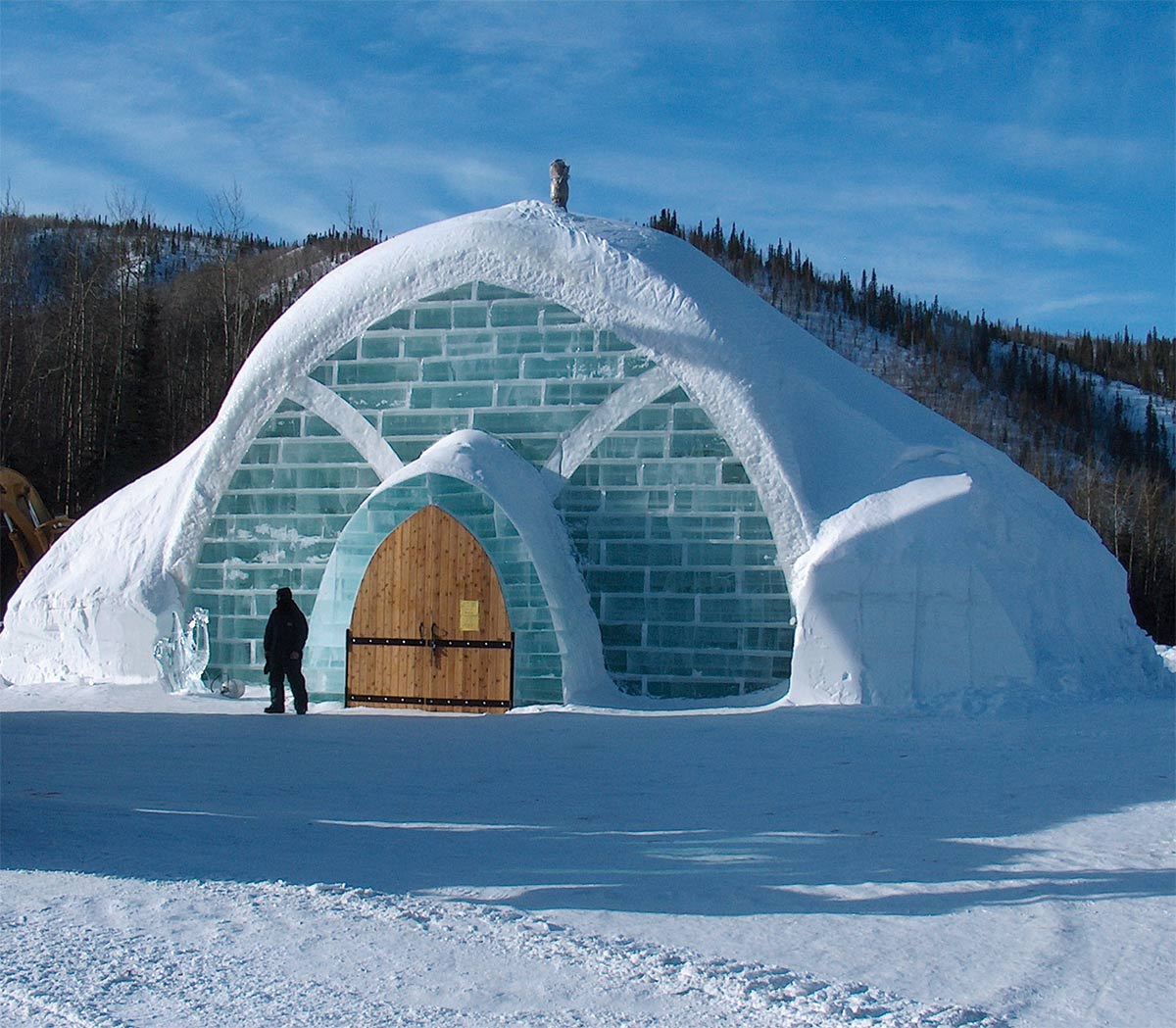
here’s an infinite supply of clean energy hidden in Alaska—and it’s right under our feet.
By now, most of the state’s residents have probably heard that their home is one of the most geothermally active regions in the world, with the Ring of Fire and countless hot springs decorating the landscape. And while tapping into geothermal heat is by no means a new concept, the resource does have certain advantages over other renewables like wind and solar, particularly as they relate to issues of availability.
But if this is common knowledge and the tech is readily available, then why hasn’t the state been able to capitalize on this opportunity?
The way Shaun Peterson sees it—a State of Alaska petroleum geologist with the Department of Natural Resources (DNR)—geothermal is a solution looking for a problem.
“Think in terms of a problem being something like a remote project, such as a seafood plant or mine, located away from the grid,” he says. “That project is going to need a source of local energy and if its location is in close proximity to a geothermal resource, then geothermal could be a solution.”
A common argument as to why geothermal has yet to become a real presence in Alaska’s energy mix is centered around the fact that most of the resources are too far from major population centers.
It’s also important to remember that there’s a certain degree of risk associated with situating a power plant next to (or on top of) an active volcano.
So Alaska’s relationship with one of its most abundant resources is complicated. And it’s a relationship that dates back to the ‘60s, when the concept of using an Organic Rankine Cycle generator on a geothermal resource was first tested at Manley Hot Springs.
Curiously, a few projects across the state are gaining momentum—including one only 80 miles from Anchorage—that could redefine geothermal energy’s role in Alaska.
That idea, of course, was Bernie Karl’s—he has a lot of them. Karl envisioned the hotel would serve as a calling card to his resort at Chena Hot Springs.
Two years later, Karl swapped the diesel generators that powered the resort in favor of a geothermal system that captures the natural heat of the hot springs. This drastically cut his resort’s electricity rates, from $0.30 to $0.05 per kilowatt hour.
Much like the ice hotel—today operating as the Aurora Ice Museum, despite early skepticism—geothermal wasn’t always the obvious answer. Initially, Karl tasked a young engineer with designing a system that would produce hydroelectricity from a nearby creek.
DNR Oil & Gas Division
katatonia82 | istock
After it was established that the hydropower resource wouldn’t meet the resort’s desired output, Holdmann steered the project in a different direction.
“The reports said you definitely can’t generate power from geothermal,” Holdmann remembers. “So I just started asking: ‘Why?”
The prevailing wisdom at the time was that the water at Chena simply wasn’t hot enough. But like any engineer, Holdmann was relentlessly curious. She recognized that the difference in temperature between the hot water and the cold water resource available at the springs—the two main factors in a successful geothermal equation—was actually similar to other small geothermal plants in the Lower 48.
Holdmann’s questioning eventually led the team to a novel approach: they would use a refrigerant with a lower boiling point as the intermediary fluid for the power cycle.
Karl’s team ended up partnering with United Technologies Corporation, drawn by its PureCycle power generation systems, which were originally designed to capture waste heat from industrial processes. The PureCycle system was then tailored to fit the hot spring at Chena, and together the companies demonstrated that off-the-shelf refrigeration equipment could be used to generate power.
“It was understood technically that it could be done, but it just hadn’t been done before. By doing that, it’s created this whole renaissance in the industry of using low temperature energy for power generation,” Holdmann says proudly, though also stressing the crucial importance of having a year-round cold water resource readily available.
Today, Chena Hot Springs is the highest-capacity geothermal power plant in the state, fueled by the lowest temperature water used for commercial production in the world.
And Karl has even bigger plans in the works.
It would begin with the construction of a 30 megawatt plant at the base of the volcano, fueled by Makushin’s 397°F temperatures. That’s enough power to run all of Unalaska, and progress on the project is well underway.
Karl’s Chena Power teamed up with Ounalashka Corporation to form OCCP. Ounalashka Corporation, which owns 51 percent of OCCP, issued the joint venture more than 7,000 acres of land to move the project forward. This, along with a thirty-year power purchase agreement signed in August of 2020 by the city of Unalaska, means that Karl’s vision could soon become reality.
“It’s a very good deal for the city,” says Karl, comparing the project’s anticipated electricity rates to the current rates paid for diesel-generated electricity. “It’ll be the cleanest, most productive community in the world.” He adds that OCCP is on track to secure the necessary permits and that first power is expected to be delivered in November of 2023.
The second phase of the project, Karl explains, is installing 40 acres of greenhouse that would produce 195,000 pounds of food each week, similar to the set-up at Chena but on a much larger scale. And naturally, it wouldn’t be a Bernie Karl project without a world class hot spring.
Game McGimsey | USGS

Game McGimsey | USGS
Phase three will tackle the carbon emissions produced by the largest fishing fleet in America. According to Karl, 60 percent of all fish in the United States comes from Dutch Harbor, and he’s hoping to address the industry’s emissions by producing 65 million gallons of liquid hydrogen per year—a zero carbon alternative fuel when produced from renewable sources like geothermal.
Key to realizing this grand vision is securing the proper financing, an overarching challenge facing renewable energy projects worldwide. But if you ask Karl, he’ll tell you otherwise.
“To me, I see everything as its finished product. A lot of people see challenges but I don’t see any at all; all I see is opportunity. By the end of this year—things are going to look a lot different.”
“Mount Spurr is what we keep coming back to decade in and decade out,” says DNR’s Peterson. “The reason for that is because of its close proximity to a large population center where the energy could more easily be added into existing grids.”
Only 80 miles west of Anchorage, the volcano has been a focal point in the state’s geothermal discussion for years. And for good reason.
One of the things that makes geothermal such an attractive resource is that it can be harnessed in a few different ways. As well as creating electricity from hot water or steam, geothermally heated water can also be used directly as a heating source.
“Mount Spurr is exciting to me because it’s only 35 miles or so from the Beluga gas field where the transmission system starts,” says Chris Rose, executive director for the Renewable Energy Alaska Project. “Theoretically, [in addition to a power plant] you could also physically transport hot water from Mount Spurr into Anchorage and heat a portion of the city.
RUBEN RAMOS | iStock

RUBEN RAMOS | iStock
During a trip to Reykjavík, Rose saw firsthand what a society running on renewables can look like. And a big piece of that picture was 40 miles of pipeline connecting a geothermal powerplant to the city: “It’s not sophisticated insulation and they hardly lose any temperature—half the buildings and sidewalks are heated with geothermal water from the powerplant,” he recalls. “And the other half comes from actual wells right in the city.”
Raser hasn’t offered any indication as to its development plans, but it isn’t difficult to imagine that Mount Spurr’s potential for mixed use, coupled with its proximity to a major population center, was a factor in pursuing the lease.
During its lease sale in 2008, the DNR issued 36,000 acres of Mount Spurr’s southern flanks to a company called Ormat Technologies. With $15 million in state government assistance, Ormat’s exploration efforts culminated in a well drilled to a depth of 4,000 feet.
Explore Fairbanks

Explore Fairbanks
The DNR’s March press release announcing Raser’s exploration permit states that the Utah-based firm approached the state on the heels of renewed interest in geothermal, along with “advances in exploration technology and techniques.”
What exactly those advances are remains unclear, and Raser was unavailable for comment at the time of publication.
Despite the obvious, long-term benefits of swapping hydrocarbons for hydrothermal, the upfront investment needed to kickstart these projects continues to hinder their progress— especially without a clear energy strategy in place.
“Projects like these require investment and commitment over long periods of time,” says Holdmann. “And when we don’t have a strategy around a long-term energy portfolio, it’s really difficult for anyone to make those kind of investment decisions—certainly not the private sector.”
ATGImages | iStock
“They’ve developed their renewable energy resources and have been able to attract industry, but it was based on a commitment to long-term, cheap power for those industries,” she explains.
Peterson agrees, pointing to the state and federal subsidies that have been key to previous geothermal efforts.
Relying on his earlier analogy, he adds: “As people get excited about wanting to harness geothermal energy to address climate change, it’s worth remembering that it will likely cost more than existing energy demand solutions, at least in the short to midterm. A geothermal project will probably need to be subsidized in some way if it is not providing a very specific solution to a very specific problem.”
But there’s no denying that the state’s geothermal engine is revving, perhaps fueled by the concern of a warming climate and a cooling oil industry. To echo the bullish Karl once more, by the end of the year… things really could look a lot different.
“There’s a lot of movement and momentum, partly because of the administration and congress has changed,” says Rose on the push towards sustainable energy. “Also, because the prices of everything are going down so fast: batteries have come down 85 percent in the last decade, solar has come down almost 90 percent… everything is moving in a direction where we need to go.” ![]()